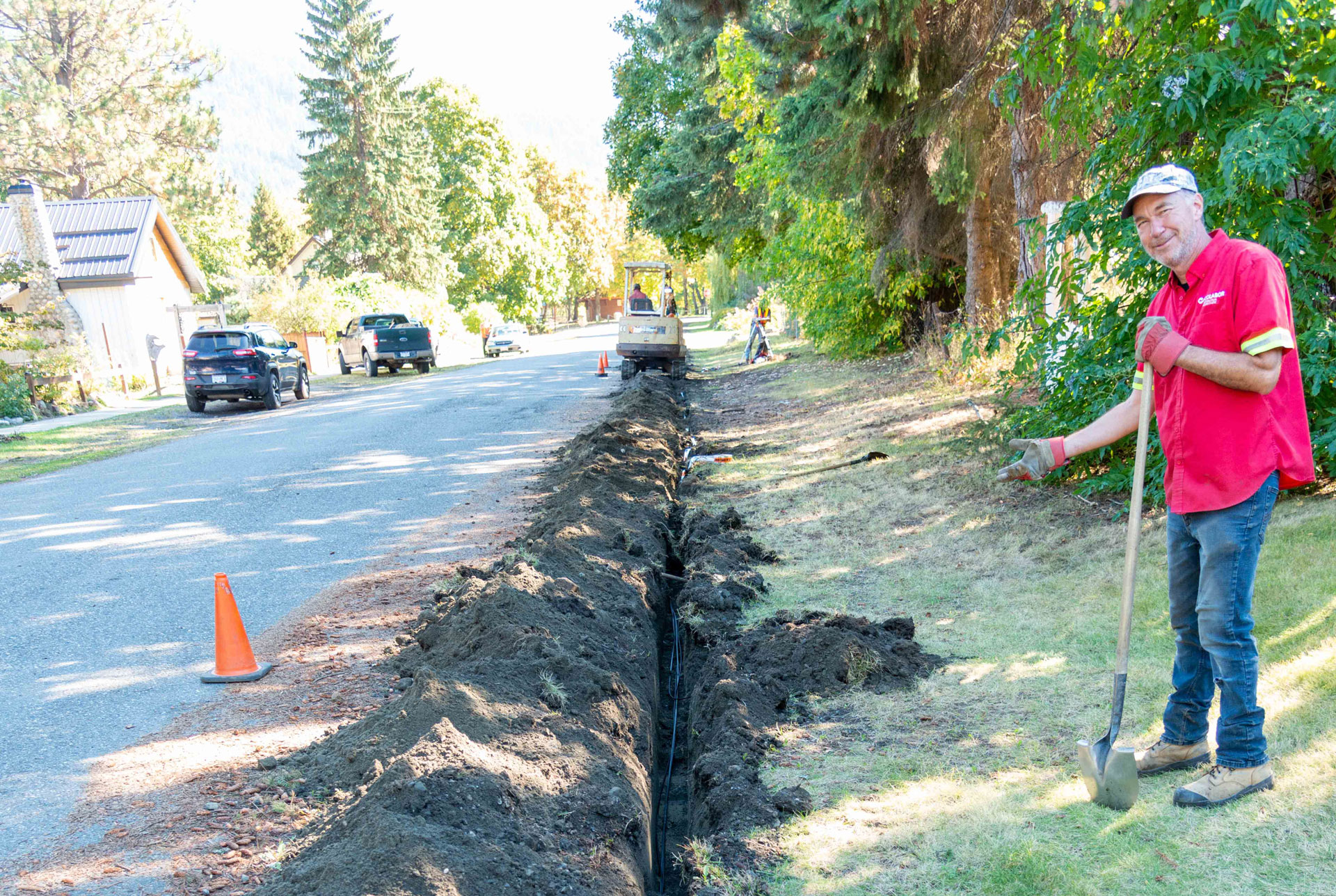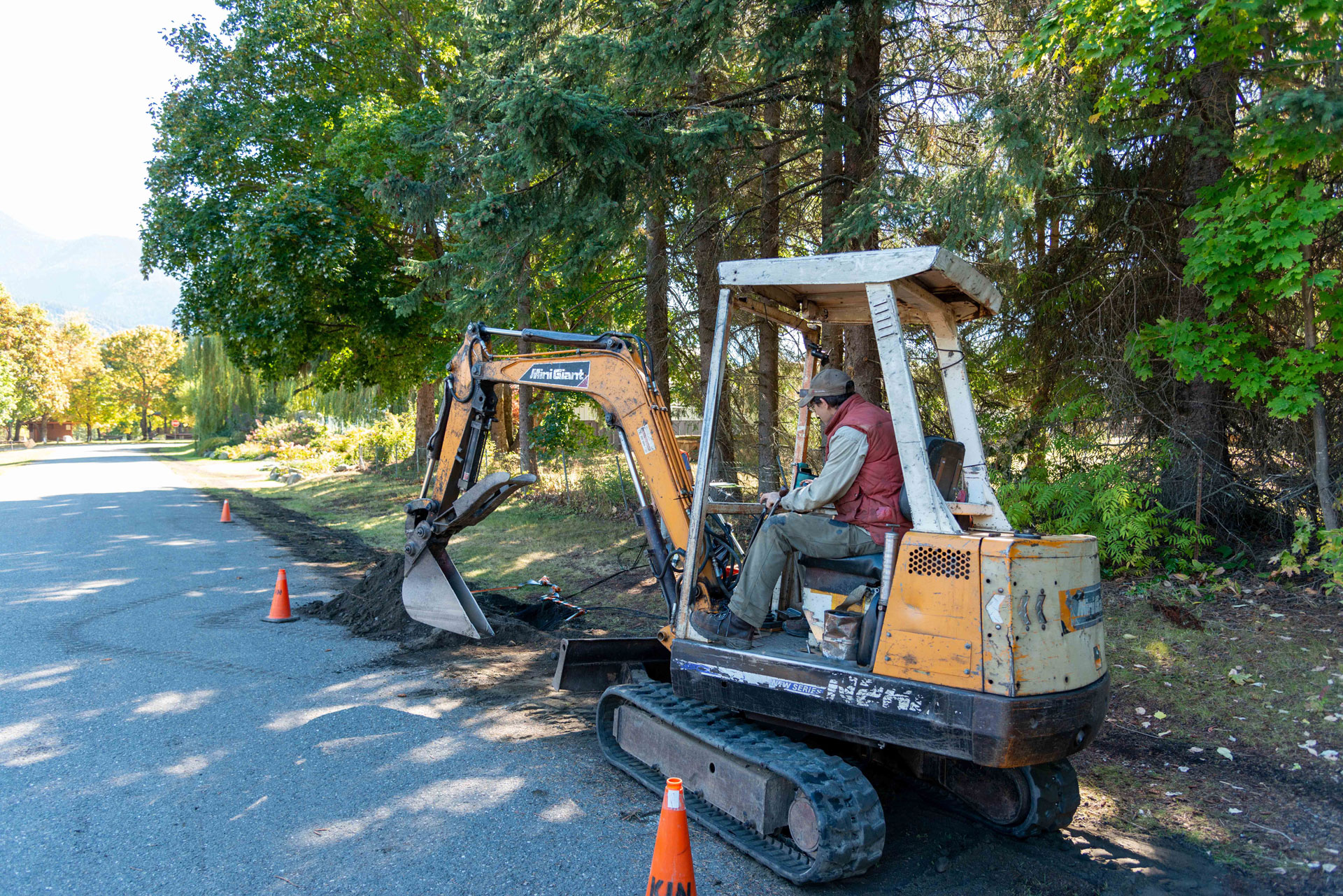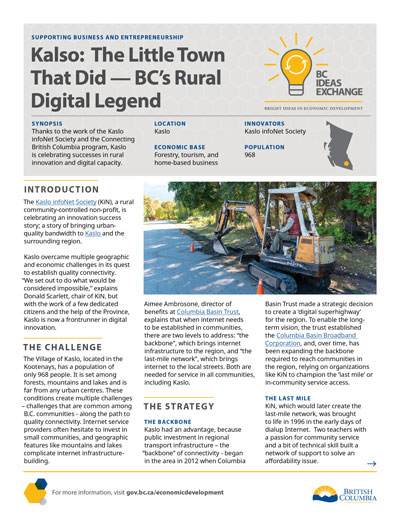Kaslo: The little town that did — B.C.’s rural digital legend

The Kaslo infoNet Society (KiN), a rural community-controlled non-profit, is celebrating an innovation success story; a story of bringing urban-quality bandwidth to Kaslo and the surrounding region. Kaslo overcame multiple geographic and economic challenges in its quest to establish quality connectivity. “We set out to do what would be considered impossible,” explains Donald Scarlett, chair of KiN, but with the work of a few dedicated citizens and the help of the Province, Kaslo is now a frontrunner in digital innovation.
The challenge
The Village of Kaslo, located in the Kootenays, has a population of only 968 people. It is set among forests, mountains and lakes and is far from any urban centres. These conditions create multiple challenges – challenges that are common among B.C. communities - along the path to quality connectivity. Internet service providers often hesitate to invest in small communities, and geographic features like mountains and lakes complicate internet infrastructure-building.
Aimee Ambrosone, director of benefits at Columbia Basin Trust, explains that when internet needs to be established in communities, there are two levels to address: “the backbone”, which brings internet infrastructure to the region, and “the last-mile network”, which brings internet to the local streets. Both are needed for service in all communities, including Kaslo.
The strategy
The backbone
Kaslo had an advantage, because public investment in regional transport infrastructure – the “backbone” of connectivity - began in the area in 2012 when Columbia Basin Trust made a strategic decision to create a ‘digital superhighway’ for the region. To enable the long-term vision, the trust established the Columbia Basin Broadband Corporation, and, over time, has been expanding the backbone required to reach communities in the region, relying on organizations like KiN to champion the ‘last mile’ or in-community service access.
The last mile
KiN, which would later create the last-mile network, was brought to life in 1996 in the early days of dialup Internet. Two teachers with a passion for community service and a bit of technical skill built a network of support to solve an affordability issue. Over the past two and half decades, KiN’s services have changed and evolved along with the technology.
“[People couldn’t] live here and participate in a digital economy. I was presented with two choices … go back to the city, or solve the problem.” - Tim Ryan, board member of KiN
KiN, with its technical expertise, partnered with the Village of Kaslo and the Columbia Basin Broadband Corporation to pursue a solution to the community’s connectivity challenge from 2014 to 2019. Construction began on the fibre project to enable faster service and expand KiN’s service area. It wasn’t possible to bring a fibre cable over the mountains or through them, so they looked at using a submarine fibre cable. The Columbia Basin Trust had an established network in Balfour, a lakeside community about 35 km from Kaslo, which was close enough to reach. To access the network, KiN put a submarine fibre cable in the lake that connected the two communities. This cable was the last-mile solution that brought faster, cheaper internet to the streets of Kaslo.
Project funding
Of course, this major infrastructure project required funding. To complete the project, KiN pursued a grant from the Connecting British Columbia program, a multi-year grant program funded by the Province and administered by Northern Development Initiative Trust.
Successes
- Kaslo residents can access internet speeds comparable with major urban centres on KiN’s owned and operated network. Community members report that the internet connection has worked flawlessly since it was established.
- Kaslo has attracted young creatives and digital innovators to the area and seen economic growth due to tech businesses, home-based businesses and telecommuting professionals working in the area.
- Over the next few years, KiN plans to bring fibre-optic internet service to more communities, focusing on the west shore of Kootenay Lake.
“People here have come to understand that Kaslo infoNet Society is here for the long haul.” - Randy Morse, director of communications at the BC Rural Centre
Lessons learned
- A successful project requires leaders with vision and determination, and a partnership with their local municipality or regional district. A community can manage “a lot of network without a lot of people.”
- Networking is a powerful tool! Talk to neighbouring communities, First Nations and districts about their needs and experiences with connectivity planning.
- A small community can build a high-speed network on its own. Community partners often already have many of the skills required, like managing financials and people, and they may have more technical capability than they realize.
- A large degree of technical savvy is not required.
“There is a perception that that fibre connectivity is complex … (but) it’s 90% ditch-digging and 10% technology. The technology itself is readily available and can be implemented by just about any community.” - Tim Ryan, board member of KiN
Learn more
Education is the economic-development gateway to creative solutions and investment attraction.
- Find out more about the Connecting British Columbia program. The program supports new and upgraded backbone and last-mile infrastructure projects in rural and remote communities in B.C.
- Learn more about the connectivity process by talking to local economic development organizations, entrepreneurs, the Federation of Canadian Municipalities, independent network designers and others.
- Have questions about connectivity planning? Learn more about Connected Communities or contact the team with questions or feedback.
Innovators: Kaslo infoNet Society
Area Population: 968
Economic Base: Forestry, tourism, and home-based business



